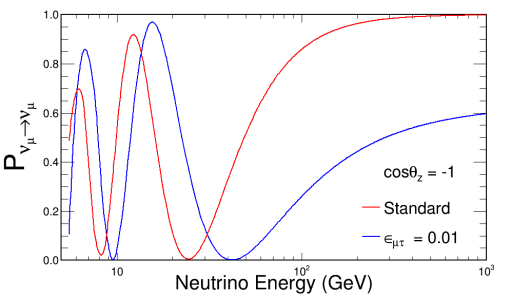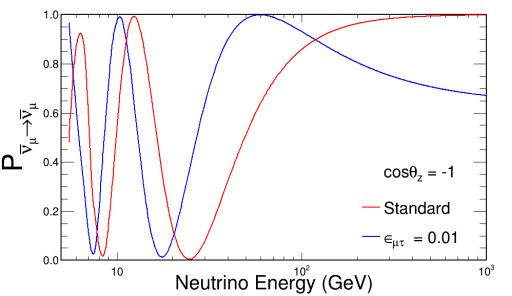

The observation of atmospheric neutrinos with a neutrino telescope provides a means to study neutrino oscillations with a base-line length up to the order of the diameter of the Earth. The focus of investigation is the muon neutrino, but there is also a very interesting possible signature for extremely high energy (>100 TeV) tau neutrinos.
Atmospheric oscillations
Atmospheric neutrinos are emitted in the decay of hadrons produced by the interactions of cosmic rays with atmospheric nuclei.
The ANTARES neutrino telescope has an energy threshold of a few tens of GeV. This allows to study the phenomenon of atmospheric muon neutrino disappearance due to neutrino oscillations. In a similar way, constraints on the 3+1 neutrino model, which foresees the existence of one sterile neutrino, can be inferred.


Non-standard neutrino interactions
Non-standard interactions of neutrinos arising in many beyond the Standard Model physics models can significantly alter matter effects in atmospheric neutrino propagation through the Earth. A search for deviations from the prediction of the standard 3-flavour atmospheric neutrino oscillations using the data taken by the ANTARES neutrino telescope has been done constraining the models and further restraining the strength of possible non-standard interactions in the μ−τ sector.
